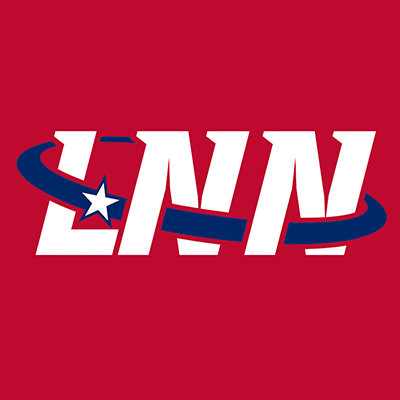By all appearances, ArcelorMittal Liberia should be a glowing success story, an emblem of postwar investment, economic revival, and international cooperation. The global steel giant, operating the largest mining concession in the country, exported an astonishing 6.4 million metric tons of iron ore between 2021 and 2022. This generated a staggering $477.2 million in revenue according to the 15th Report of the Liberia Extractive Industries Transparency Initiative (LEITI), specifically highlighted in section 4.14 and reiterated on page 132 of the report. With numbers this significant, one might expect to see tangible signs of prosperity across Liberia’s mining belt: robust infrastructure, modern housing, flourishing local economies, and satisfied Liberian workers.
Instead, the story that emerges from Nimba, Bong, and Grand Bassa Counties, where ArcelorMittal’s operations are concentrated, is one marked by growing discontent, accusations of exploitation, and persistent poverty. Despite the headline revenue figures, questions continue to swirl about who truly benefits from ArcelorMittal’s footprint in Liberia. Workers complain of underpayment and poor working conditions. Communities point to inadequate housing, a lack of clean water, and broken promises of development. Government institutions, though partially strengthened by ArcelorMittal’s tax and royalty contributions, seem unable or unwilling to fully enforce labor standards or environmental regulations.
ArcelorMittal began operations in Liberia in 2005 under a Mineral Development Agreement (MDA) hailed at the time as a symbol of the country’s emergence from years of civil conflict. Over time, the agreement was amended, most recently in 2011, to allow for expanded operations, including the rehabilitation of the Yekepa-Buchanan railway and port facilities. The concession spans over 500,000 hectares across multiple counties. The company employs more than 2,700 people directly, with thousands more indirectly engaged through subcontractors.
However, the substance of ArcelorMittal’s local engagement has often failed to meet expectations. Liberians working within the company frequently report being paid significantly less than their expatriate counterparts for similar roles. Labor unions and civil society organizations have repeatedly called for salary harmonization and better working conditions. Reports of workplace accidents and fatalities have also surfaced over the years, spotlighting safety lapses in a sector that already carries significant physical risks.
In Buchanan, the port city that serves as ArcelorMittal’s primary export hub, many residents describe a troubling paradox. Giant ore carriers dock regularly, shipping Liberia’s rich iron ore to global markets, yet the surrounding communities remain stuck in economic stagnation. Local infrastructure is dilapidated, youth unemployment is rampant, and promises of vocational training and community development projects are only partially fulfilled or have stalled altogether.
According to LEITI’s findings, ArcelorMittal’s iron ore exports alone accounted for 40% of Liberia’s total mineral export value in the 2021/2022 fiscal period, second only to Bea Mountain Mining Corporation. In sheer volume, ArcelorMittal leads by a wide margin. This dominance underscores its importance to Liberia’s national budget, but it also exposes a vulnerability: an overreliance on a single investor with immense leverage.
The company’s contributions to the government, while significant, remain opaque in terms of their final impact. In theory, the revenues, comprising taxes, royalties, social development fund contributions, and community assistance, should improve public services and create opportunities for local populations. In practice, many of these funds are either mismanaged, underutilized, or simply fail to reach the intended beneficiaries due to corruption and weak governance systems.
There is also growing debate over ArcelorMittal’s role in Liberia’s long-term development vision. Critics argue that the company operates more as an enclave, exporting raw materials without sufficient downstream industrialization or skills transfer to Liberians. Plans to build a concentrator to process iron ore domestically have been delayed, and the lack of beneficiation means Liberia continues to export low-value raw ore rather than capturing more of the value chain. Reflecting this concern, Anderson Miamen, a prominent transparency advocate and Executive Director of the Center for Transparency and Accountability in Liberia (CENTAL), recently took to Facebook to express frustration over the company’s image-driven approach: “Which mining company you know does more Public Relations than Mittal Steel? Most times, people don’t need this kind/level of publicity to showcase their impacts.” His post struck a chord with many Liberians who feel the company’s visibility far outweighs its tangible contributions to ordinary lives.
All of this fuels a broader reckoning with Liberia’s resource governance model. ArcelorMittal’s operations are not the sole cause of Liberia’s underdevelopment, but they are emblematic of a system where foreign investors reap outsized gains while local communities struggle for basic dignity. Until Liberia strengthens its regulatory institutions, enforces labor laws, and ensures greater transparency and accountability in concession management, even billion-dollar operations like ArcelorMittal’s will fail to lift the country out of poverty.
In the end, the story of ArcelorMittal Liberia is a cautionary tale. It reflects the urgent need to move from extractive economics to inclusive development. The iron ore may be leaving Liberia in massive quantities, but the question remains: what is truly being left behind for Liberians?


